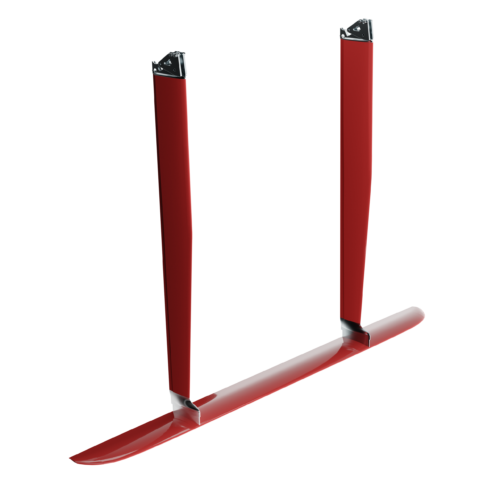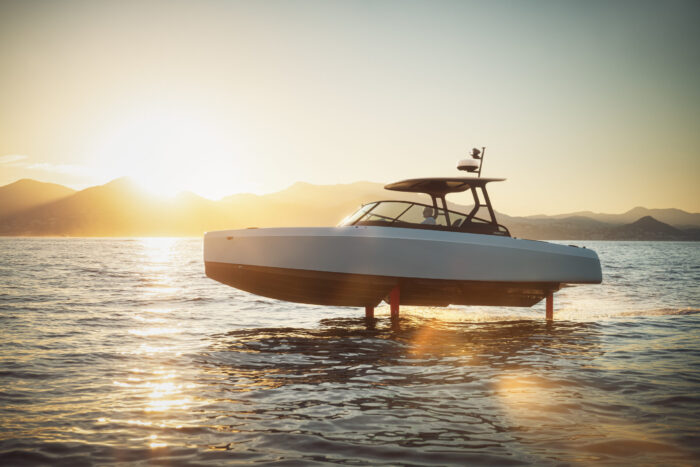A boat with 'wings' under its hull might sound like science fiction to many people.
But depending on where you live, a hydrofoil might be a regular sight. Across Europe and parts of Asia, these boats have been used for decades as passenger ferries along rivers and lakes.
But no matter where you live, hydrofoils are rarely used as personal boats. And that makes this new Swedish motorboat really interesting.
Made by a company called Candela, the C-8 is an all-electric hydrofoil that breaks a lot of rules of personal motorboats. It goes faster, but has a smaller motor than a conventional motorboat. It uses about 80 percent less energy than those crafts, too.
And it flies! (Sort of!) Have a look below, as the team talks about the process of building the craft.
How does a boat 'fly'?
Well, let's talk about what hydrofoiling is. And to do that, we begin in the air.
Airplanes use something called aerofoils to fly. Basically, if you look at a plane's wing from the side, you'll see an aerofoil. Here are a bunch of them.

These are different examples of foils as seen from the side. Some of them are aerofoils, others hydrofoils. And some are from human-made craft, while others are from nature! (Wikimedia Commons)
Though exactly how each of these foils work can be complex, the general idea behind them is pretty simple.
In flight, there are two main forces: lift and drag. Lift is a force that creates upward motion through a medium. (In this case, 'medium' is not a drink size or shirt size. It is just a word for a huge 3D space of stuff. Our atmosphere is a medium made of gas. The ocean is a medium made of liquid.)
Meanwhile, drag is a force that pushes against something. In the case of a plane, it would cause it to slow down and stay on the ground.
An aerofoil works because it is a shape that creates a lot of lift while reducing, or lowering, drag. Now the plane can fly through the air!
Water wings

The main hydrofoil on the C-8 looks simple, doesn't it? (Candela)
A hydrofoil does the same thing, but through the medium of water, not air. But hold on. Boats already float on the surface of water—they sit on top of the medium of water. So why is a hydrofoil effective?
If you've ever gone swimming, you've probably noticed something pretty quickly. Water is heavy to move through. Just try 'jogging' through a wading pool. The water pulls at your legs, slowing you way down. This is because water is a much thicker medium than air.
As a normal boat moves, it is constantly being slowed down by the water 'pulling' on its hull. This is extra true if there are any waves. As the boat smashes into the waves, it is slowed down even further. The drag created by the water means that a boat must work much harder than a car to go fast.
But on a hydrofoil, once the boat gets enough speed, the foils lift the boat up and above the water. The only parts of the boat that are actually in the water are those wings. Now there is way less drag, and boat can move faster, all while using less energy.
This technology is why a boat like the C-8 can have an engine that is so much smaller than your average motorboat. And it is also why the boat leaves almost no wake (waves behind it). Instead of going through the waves, it gently 'flies' over the water's surface. Wheee!
Quick test
Test out hydrofoiling yourself the next time you have a bath!
Try moving your hand through the water in two ways. First, with your hand cupped and upright against the water. Then, with your hand flat and parallel to the water's surface. In the first instance, you're creating maximum drag, pushing against the water. (Splash! Sorry!) But in the second, your hand is creating minimal drag and should glide through easily.
You won't generate enough lift to 'fly', but you will notice immediately how the shape of an object has a big effect on how easily it passes through a medium.
 Is it flying or floating? (Candela)
Is it flying or floating? (Candela)









